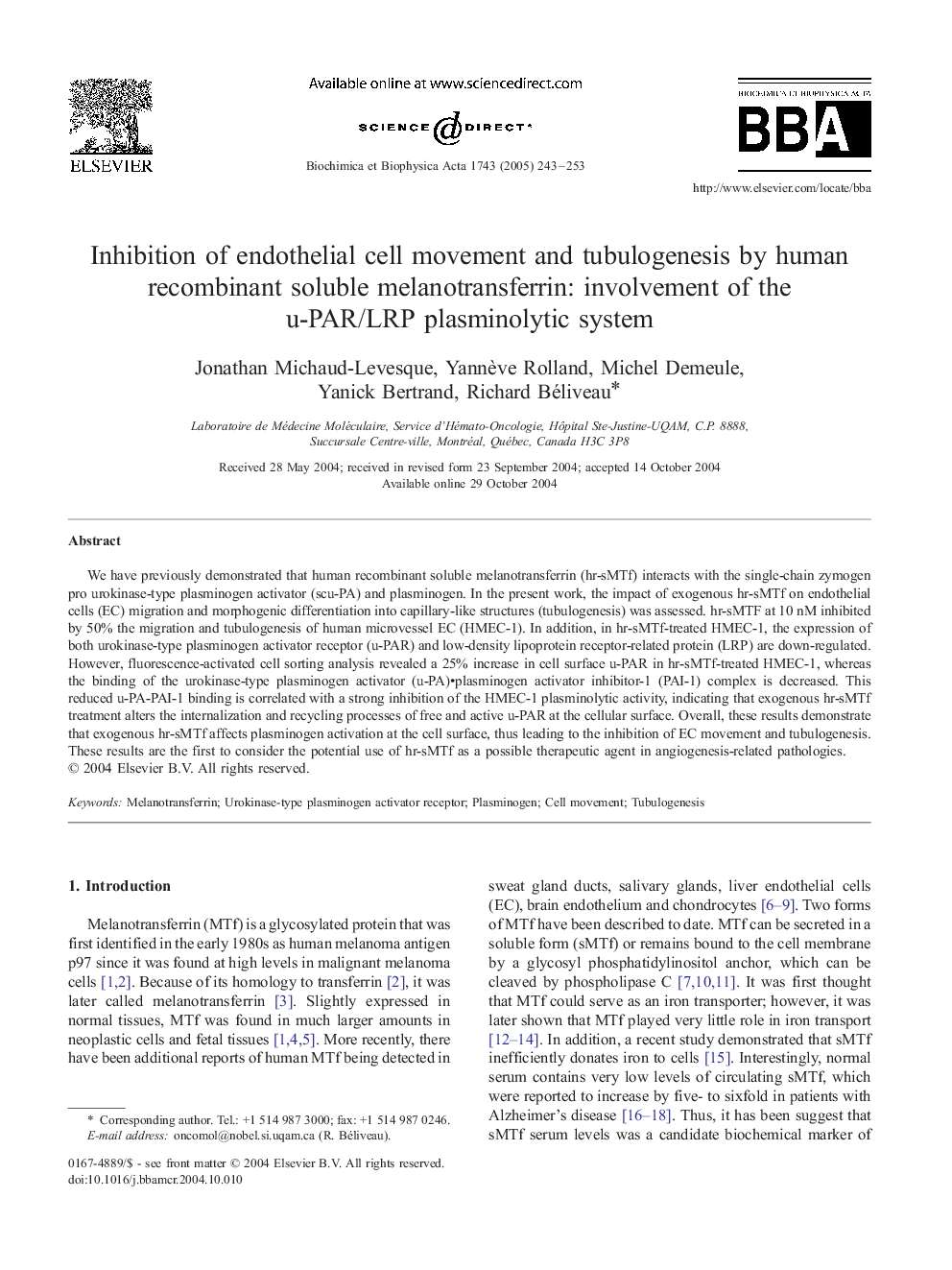| Article ID | Journal | Published Year | Pages | File Type |
|---|---|---|---|---|
| 10803219 | Biochimica et Biophysica Acta (BBA) - Molecular Cell Research | 2005 | 11 Pages |
Abstract
We have previously demonstrated that human recombinant soluble melanotransferrin (hr-sMTf) interacts with the single-chain zymogen pro urokinase-type plasminogen activator (scu-PA) and plasminogen. In the present work, the impact of exogenous hr-sMTf on endothelial cells (EC) migration and morphogenic differentiation into capillary-like structures (tubulogenesis) was assessed. hr-sMTF at 10 nM inhibited by 50% the migration and tubulogenesis of human microvessel EC (HMEC-1). In addition, in hr-sMTf-treated HMEC-1, the expression of both urokinase-type plasminogen activator receptor (u-PAR) and low-density lipoprotein receptor-related protein (LRP) are down-regulated. However, fluorescence-activated cell sorting analysis revealed a 25% increase in cell surface u-PAR in hr-sMTf-treated HMEC-1, whereas the binding of the urokinase-type plasminogen activator (u-PA)
- plasminogen activator inhibitor-1 (PAI-1) complex is decreased. This reduced u-PA-PAI-1 binding is correlated with a strong inhibition of the HMEC-1 plasminolytic activity, indicating that exogenous hr-sMTf treatment alters the internalization and recycling processes of free and active u-PAR at the cellular surface. Overall, these results demonstrate that exogenous hr-sMTf affects plasminogen activation at the cell surface, thus leading to the inhibition of EC movement and tubulogenesis. These results are the first to consider the potential use of hr-sMTf as a possible therapeutic agent in angiogenesis-related pathologies.
- plasminogen activator inhibitor-1 (PAI-1) complex is decreased. This reduced u-PA-PAI-1 binding is correlated with a strong inhibition of the HMEC-1 plasminolytic activity, indicating that exogenous hr-sMTf treatment alters the internalization and recycling processes of free and active u-PAR at the cellular surface. Overall, these results demonstrate that exogenous hr-sMTf affects plasminogen activation at the cell surface, thus leading to the inhibition of EC movement and tubulogenesis. These results are the first to consider the potential use of hr-sMTf as a possible therapeutic agent in angiogenesis-related pathologies.
Keywords
Related Topics
Life Sciences
Biochemistry, Genetics and Molecular Biology
Biochemistry
Authors
Jonathan Michaud-Levesque, Yannève Rolland, Michel Demeule, Yanick Bertrand, Richard Béliveau,
